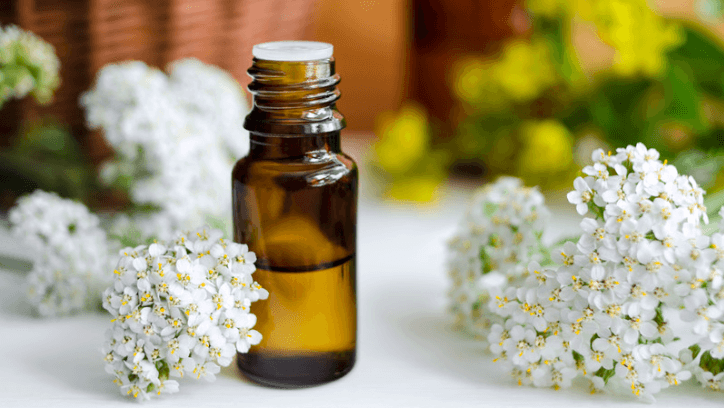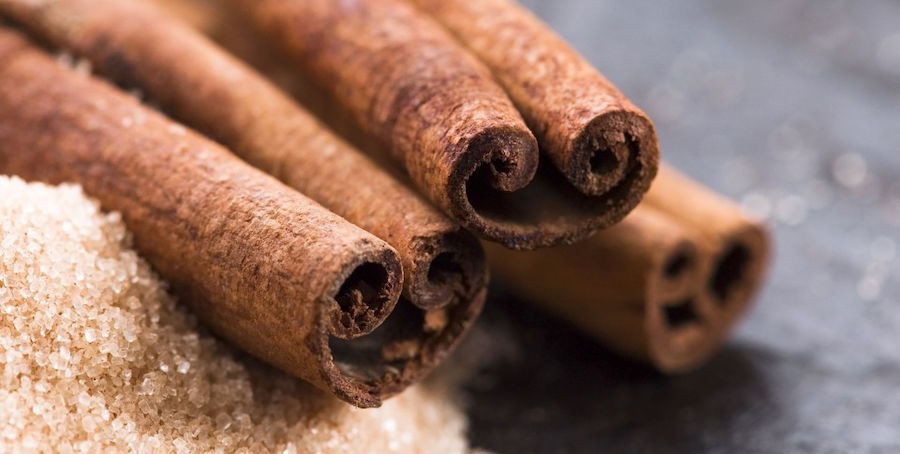Written by Dorene Petersen Founding president ACHS.edu. First published in the International Herb Association "Yarrow Herb of the Year 2024™". Reprinted with permission.
Yarrow, a humble herb with a rich history in traditional medicine, was named by the International Herb Association as 2024’s Herb of the Year. Recent research has shed light on its myriad therapeutic properties, making it a must-have in your natural remedy arsenal. Let's delve into the remarkable benefits of Yarrow Achillea millefolium (L.) essential oil and explore its potential applications.
Cold Relief and Mucus Management
One of the standout qualities of yarrow essential oil is its ability to aid in cold recovery and alleviate excessive mucus. Key constituents like alpha-terpineol and 1,8 cineole play pivotal roles in this process. The antimicrobial and mildly expectorant properties of 1,8 cineole make it a potent ally against the common cold. Additionally, yarrow's diaphoretic action aids in reducing the swelling of mucous membranes, loosening mucus, and, therefore, facilitating easier breathing.
When Yarrow essential oil is applied externally to the skin, it can have a mild anesthetic property. As an added perk, it’s cleansing and soothing and can be used to promote radiant, refreshed skin. For optimal cold relief, consider sipping on a yarrow flower and leaf infusion while diffusing yarrow essential oil throughout the day. It’s important to note that internal use of essential oils is only recommended if no contraindications exist and no specific data has been found to support wound-healing properties1. We recommend consulting with an aromatherapist prior to use.
Insect Repellent
Beyond its role in combating colds, yarrow essential oil exhibits impressive insect-repellent properties, thanks again to the 1,8 cineole constituent, which is toxic to insects. This can be incredibly crucial in areas that are susceptible to deadly mosquito-borne illnesses such as malaria, dengue, and zika. By adding yarrow oil to lemon eucalyptus Eucalyptus citriodora (Hook.) and catnip Nepeta cataria (L.) essential oils, you can create a powerful deterrent against harmful mosquitoes.
Antimicrobial, Anti-Inflammatory, and Antioxidant
The therapeutic benefits of yarrow essential oil don't stop there. It has antimicrobial properties that have been shown to combat a range of microorganisms, including bacteria and fungi. Studies have demonstrated its efficacy against various pathogens that cause conditions like sinusitis, food poisoning, and skin infections2,3,4. Furthermore, yarrow's anti-inflammatory properties make it a valuable addition to skincare formulations5.
Amazingly, yarrow’s profile of constituents indicates that it also holds antioxidant and anticancer functions. A 2013 study in the International Journal of Molecular Sciences confirms its anti-inflammatory and antioxidant actions6.
Yarrow as a Perfume Ingredient
A soothing aroma can also be a therapeutic benefit, and yarrow essential oil has a firm place in the realm of perfumery. Its sweet, fresh, and somewhat camphor-like aroma adds depth to fragrance blends. When combined with oils like cedarwood, bergamot, and lavender, yarrow imparts a lingering fragrance that captivates the senses.
The 2024 Herb of the Year has no shortage of therapeutic benefits for the body and mind. Yarrow essential oil stands out as a versatile and potent botanical remedy, offering relief from cold symptoms, insect bites, and various ailments. Whether used topically, aromatically, or in skincare formulations, its potential is undeniable. As research continues to unveil its healing properties, yarrow is poised to become a staple in holistic wellness practices worldwide.
Disclaimer:
This content is for educational purposes only and is not intended to be medical advice. It is not intended to treat, diagnose, cure, or prevent disease. This article has not been reviewed by the FDA. Always consult with your primary care physician or naturopathic doctor before making any significant changes to your health and wellness routine.
Sources:
- Vitale, S., Colanero, S., Placidi, M., Di Emidio, G., Tatone, C., Amicarelli, F., & D’Alessandro, A. M. (2022). Phytochemistry and biological activity of medicinal plants in wound healing: an overview of current research. Molecules, 27(11), 3566. https://www.ncbi.nlm.nih.gov/pmc/articles/PMC9182061/
- Centers for Disease Control and Prevention. (2020, September 1). Types of pneumococcal disease. Centers for Disease Control and Prevention. https://www.cdc.gov/pneumococcal/about/infection-types.html
- Seniya, S. P., & Jain, V. (2022). Decoding phage resistance by mpr and its role in survivability of Mycobacterium smegmatis. Nucleic acids research, 50(12), 6938–6952. https://doi.org/10.1093/nar/gkac505
- Wang, C.J., Song, Y., Li, T., Hu, J., Chen, X., & Li, H. Mycobacterium smegmatis skin infection following cosmetic procedures: Report of two cases. Clinical, Cosmetic and Investigational Journal, 15, 535-540.
- Chou, S. T., Peng, H. Y., Hsu, J. C., Lin, C. C., & Shih, Y. (2013). Achillea millefolium L. essential oil inhibits LPS-induced oxidative stress and nitric oxide production in RAW 264.7 macrophages. International Journal of Molecular Sciences, 14(7), 12978-12993.
- Chou, S. T., Peng, H. Y., Hsu, J. C., Lin, C. C., & Shih, Y. (2013). Achillea millefolium L. essential oil inhibits LPS-induced oxidative stress and nitric oxide production in RAW 264.7 macrophages. International journal of molecular sciences, 14(7), 12978-12993






